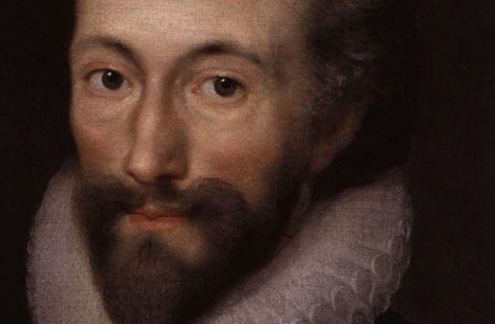
The following guide to Donne’s poems is designed to give examples both of close reading and of links between the poems.
Contents
- The Sunne Rising
- The Apparition
- The Canonisation
- A Nocturnall upon St Lucie’s Day
- The Autumnall
- Biography and context
- The Metaphysical poets
- Approaching a Donne poem – A Valediction of Weeping
- Key Characteristics of Donne’s poetry
- Variety of Attitudes to love – connections and groupings
- A Closer Look at five love poems:
- Talking to God – The Holy Sonnets
1. Biography and Context
Born in 1572, the son of a London ironmonger who died when Donne was four, and dying in 1631, John Donne’s life began in the reign of Elizabeth 1, spanned that of James I and took in the first 6 years of Charles 1. Donne was born a Catholic. His mother, a devout believer, was descended from the family of Sir Thomas More, a formidable group of Catholic intellectuals in 16th century England. It is important to understand the difficulty of being a Catholic at this time. Not only were they unable to take a degree (as this would involve signing the oath of allegiance to the monarch), serve in public office or practice their faith by attending mass, they were also subject to imprisonment and the death sentence if found harbouring priests. The method of execution was brutal, often involving disembowelling while still alive. The Catholic emphasis on the glories of martyrdom was strong and it is likely that, as a child, the poet may have been taken to witness executions of Catholics. In fact several of his own family died for their faith. His…